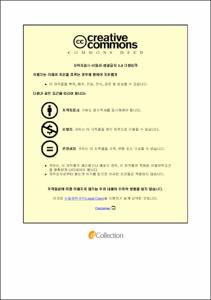근치적 방광절제술에서 의료기록 기반 노쇠지수가 수술 후 1년 사망률에 미치는 영향
- Alternative Title
- Impact of Chart-Derived Frailty Index on 1-Year Mortality after Radical Cystectomy in 1,004 Patients with Bladder Cancer
- Abstract
- 서론
근치적 방광절제술은 근침윤성 방광암의 표준치료로, 합병증과 사망률이 높은 비뇨기과 수술이다. 의료기록 기반 노쇠지수는 환자기본정보와 기본실험실검사를 통해 구할 수 있는 간편한 노쇠평가 도구이다. 따라서 본 연구는 의료기록 기반 노쇠지수가 근치적 방광절제술 후 1년 사망률에 미치는 영향을 평가하고자 한다.
연구방법
본 연구는 2007년부터 2021년까지 근치적 방광절제술을 시행 받은 환자를 대상을 한 후향적 연구이다. 의료기록기반 노쇠지수는 다음 5가지 항목 중 해당하는 항목의 개수로 정의하였다: 나이 >70세, 체질량지수 <18.5kg/m2, 헤마토크릿 <35%, 알부민 <3.4g/dL, 크레아티닌 >2.0mg/dL. 해당하는 항목이 2개 이하인 경우 낮은 노쇠지수군으로, 3개 이상인 경우 높은 노쇠지수군으로 정의하였다. 근치적 방광절제술 후 1년 사망률을 노쇠지수에 따라 평가하였다.
연구결과
1004명의 환자를 연구 대상자로 선정하였다. 노쇠지수가 낮은 군은 914명 (91.0%)이고, 노쇠지수가 높은 군은 90명 (9.0%)이었다. 1년 사망률은 노쇠지수가 낮은 군과 높은 군에서 각각 12.0% 그리고 27.8%였다 (P <0.001). 다변량 회귀분석에서 근치적 방광절제술 후 사망의 위험인자는 높은 노쇠지수 (P <0.001), 종양단계 (P = 0.003), 적혈구 수혈량 (P <0.001)이였다. 카플란-마이어 생존분석에서 노쇠지수가 낮은 군에 비해 높은 군에서 1년 사망률이 유의하게 높았다 (로그순위법, P <0.001).
결론
근치적 방광절제술에서 높은 노쇠지수는 1년 사망률 증가와 관련 있다. 따라서 의료기록기반 노쇠지수는 근치적 방광절제술 환자에서 수술 후 예후를 평가하는데 도움이 될 것이다.|Background
Radical cystectomy is a major urologic procedure with high morbidity and mortality rates. The chart-derived frailty index (CFI) is an evaluation tool that could be calculated using demographic and routine laboratory variables without requiring additional cost and effort. Therefore, the author assessed the impact of CFI on 1-year mortality rates after radical cystectomy.
Methods
This retrospective study included patients with bladder cancer who underwent radical cystectomy in 2007-2021. CFI was the sum of the following five parameters: age >70 years, body mass index <18.5 kg/m2, hematocrit <35%, albumin <3.4 g/dL, or creatinine >2.0 mg/dL. Patients were divided into those with a low (0-2) versus high (3-5) CFI. The 1-year all-cause and cancer-specific mortality rates after radical cystectomy were evaluated.
Results
Of 1,004 patients, 914 (91.0%) had a low CFI and 90 (9.0%) had a high CFI. The 1-year all-cause mortality rates of patients with a low versus high CFI were 12.0% and 27.8%, respectively (P <0.001). Multivariate Cox regression analysis revealed that high CFI (P <0.001), tumor stage (P = 0.003), and red blood cell transfusion amount (P <0.001) were significantly associated with 1-year all-cause mortality after radical cystectomy. Kaplan-Meier analysis demonstrated significantly different 1-year all-cause and cancer-specific mortality rates after radical cystectomy between patients with a high CFI and those with a low CFI (log-rank test, both P <0.001).
Conclusion
A high CFI is associated with higher 1-year mortality rates after radical cystectomy, suggesting that CFI can predict effectively postoperative outcomes in radical cystectomy.
- Issued Date
- 2024
- Awarded Date
- 2024-02
- Type
- Dissertation
- Alternative Author(s)
- LEE JIWOONG
- Affiliation
- 울산대학교
- Department
- 일반대학원 의학과
- Advisor
- 김영국
- Degree
- Master
- Publisher
- 울산대학교 일반대학원 의학과
- Language
- eng
- Rights
- 울산대학교 논문은 저작권에 의해 보호받습니다.
- Appears in Collections:
- Medicine > 1. Theses (Master)
- 파일 목록
-
-
Download
 200000735397.pdf
기타 데이터 / 1.22 MB / Adobe PDF
200000735397.pdf
기타 데이터 / 1.22 MB / Adobe PDF
-
Items in Repository are protected by copyright, with all rights reserved, unless otherwise indicated.